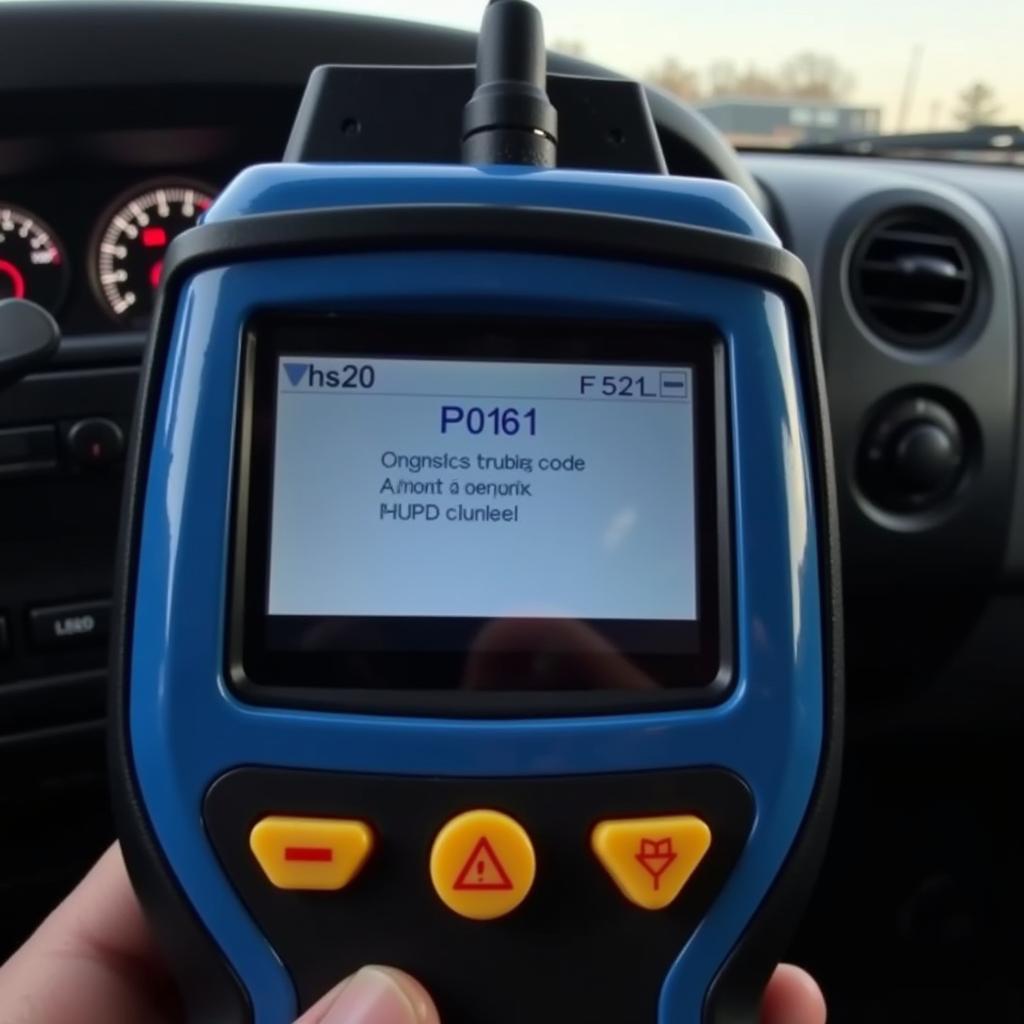Experiencing a check engine light flashing on your dashboard can be unnerving, especially when it’s accompanied by performance issues. If you’re a 2006 Ford F-250 5.4L owner and your OBD2 scanner displays the P0161 code, you’re dealing with a problem in your oxygen sensor circuit. This code specifically indicates a fault with the heater circuit of the downstream oxygen sensor (Sensor 2) located after the catalytic converter on Bank 2 of your engine. While this might sound technical, understanding this code and its implications is crucial for a swift and effective solution.
What Does OBD2 Code P0161 Mean?
The P0161 code signals that the Engine Control Module (ECM), the brain of your vehicle’s emission control system, isn’t detecting the expected activity from the heater circuit of the oxygen sensor. This heater plays a vital role in ensuring the sensor reaches its optimal operating temperature quickly, allowing it to accurately measure the oxygen content in the exhaust gases.
Common Causes of P0161 in a Ford F-250 5.4L
Several factors can trigger the P0161 code in your 2006 Ford F-250 5.4L:
- Faulty Oxygen Sensor: The most common culprit is a malfunctioning downstream oxygen sensor. Over time, these sensors can degrade due to exposure to high temperatures and exhaust gases.
- Damaged Wiring or Connector: The wiring harness connecting the oxygen sensor to the ECM can become damaged due to heat, vibration, or corrosion. A loose or corroded connector can also disrupt the circuit.
- Blown Fuse: A blown fuse in the oxygen sensor heater circuit can interrupt the power supply, leading to a P0161 code.
- Faulty ECM: While less common, a malfunctioning ECM can also be the root cause, misinterpreting signals from the oxygen sensor circuit.
Symptoms of a P0161 Code
While the illuminated check engine light is the most obvious sign, other symptoms might surface:
- Decreased Fuel Economy: A malfunctioning oxygen sensor can disrupt the air-fuel mixture, leading to reduced fuel efficiency.
- Rough Engine Idle: The engine might idle erratically or roughly due to inaccurate readings from the oxygen sensor.
- Engine Hesitation or Stalling: In some cases, the engine might hesitate during acceleration or even stall due to a compromised air-fuel ratio.
- Failed Emissions Test: A faulty oxygen sensor can increase emissions, potentially causing your vehicle to fail an emissions test.
Diagnosing and Fixing the P0161 Code
Accurately diagnosing the P0161 code requires a systematic approach:
- Visual Inspection: Begin by visually inspecting the oxygen sensor’s wiring harness and connector for any visible damage, loose connections, or corrosion.
- Check the Fuse: Locate and inspect the fuse associated with the oxygen sensor heater circuit. If blown, replace it with a fuse of the correct amperage.
- Test the Oxygen Sensor: Utilize a multimeter to test the resistance and voltage of the oxygen sensor. Refer to your vehicle’s repair manual for specific testing procedures and acceptable ranges.
- Inspect the Catalytic Converter: A clogged or damaged catalytic converter can also trigger oxygen sensor codes. Inspect the converter for any signs of damage or blockage.
Is It Safe to Drive with a P0161 Code?
While driving short distances with a P0161 code might seem harmless, it’s advisable to address the issue promptly. Driving with a faulty oxygen sensor can lead to decreased fuel economy, increased emissions, and potentially more severe engine problems.
Expert Insights
“Many car owners underestimate the importance of a functioning oxygen sensor,” says John Miller, a seasoned mechanic with over 20 years of experience. “They play a critical role in maintaining optimal engine performance, fuel efficiency, and reducing harmful emissions. Addressing any issues promptly can save you from costly repairs in the long run.”
Conclusion
Encountering the OBD2 code P0161 in your 2006 Ford F-250 5.4L signals a problem within your oxygen sensor circuit. Understanding the code, its causes, and potential solutions allows you to address the issue promptly and keep your truck running smoothly. Remember, a well-maintained vehicle not only provides a better driving experience but also contributes to a cleaner environment.
FAQs
Q: Can I replace the oxygen sensor myself?
A: Yes, replacing an oxygen sensor is a relatively straightforward task for those with basic mechanical skills.
Q: How much does it cost to replace an oxygen sensor?
A: The cost of replacing an oxygen sensor varies depending on the make and model of your vehicle.
Q: How often should I replace my oxygen sensors?
A: It’s generally recommended to replace oxygen sensors every 60,000 to 90,000 miles.
Q: Can a bad oxygen sensor damage my catalytic converter?
A: Yes, a malfunctioning oxygen sensor can potentially damage your catalytic converter over time.
Q: How can I prevent future oxygen sensor problems?
A: Regular vehicle maintenance, including timely oil changes and spark plug replacements, can help prevent premature oxygen sensor failure.
Need Help? Contact Us!
Facing a stubborn P0161 code or unsure about the next steps? Don’t hesitate to reach out to our team of automotive experts for personalized guidance and support. You can connect with us via WhatsApp at +1(641)206-8880 or drop us an email at [email protected]. We’re available 24/7 to help you get back on the road safely and confidently.


